Disclosure: Meeple Mountain received a free copy of this product in exchange for an honest, unbiased review. This review is not intended to be an endorsement.
Kemet: Blood & Sand looks much more complicated than it is. You see this big box, this sprawling board, the various and sundry pyramid parts, the power tiles, the cards that can only be played at specific times, the battle cards with three separate categories of statistics to track, the miniatures—a scorpion!, a phoenix!, a mummy sorcerer!—and you’d be justified in feeling overwhelmed.
Once you internalize a few small pieces of rule grit, though, it’s pretty straightforward. I’d even say it’s dumb. Gloriously dumb. A tribute to the possibilities of Dumb.
I mean this as highest praise.
Have We Kemet Before?
A gently rejiggered version of the 2012 classic Kemet, Kemet: Blood & Sand is a troops on a map game, a subgenre of board game in which, well, you can probably guess. Players control groups of soldiers, moving them from region to region as they attack and defend. The ultimate goal is to win enough fights and hold enough territory to emerge victorious.
On each turn—early game rounds include five turns for each player, though that can change—you choose and execute one (1) of several actions on your player board. These include moving, praying, recruiting, purchasing power up tiles, and constructing a stage of your pyramid. That’s it. Like I said, it’s much more approachable than it looks.

Combat is triggered by moving troops into a region that contains opponent pieces. Fighting is mandatory and tense. Strength is determined by the number of soldiers each player has in the region, any applicable power tiles, any applicable Divine Intervention cards—little bonus cards that for the most part can be played during your turn or during combat—and each player’s chosen battle card.
The combat system is wonderful. Each player starts the game with the same set of eight battle cards, choosing one to use and one to set aside at the beginning of each fight. The cards, which are the same for all players, include some amount of a strength bonus, a damage modifier, a self-damage modifier, and a defense modifier. Strength wins you the fight, damage removes enemy troops, self-damage removes your own troops, and defense protects your troops from enemy damage.
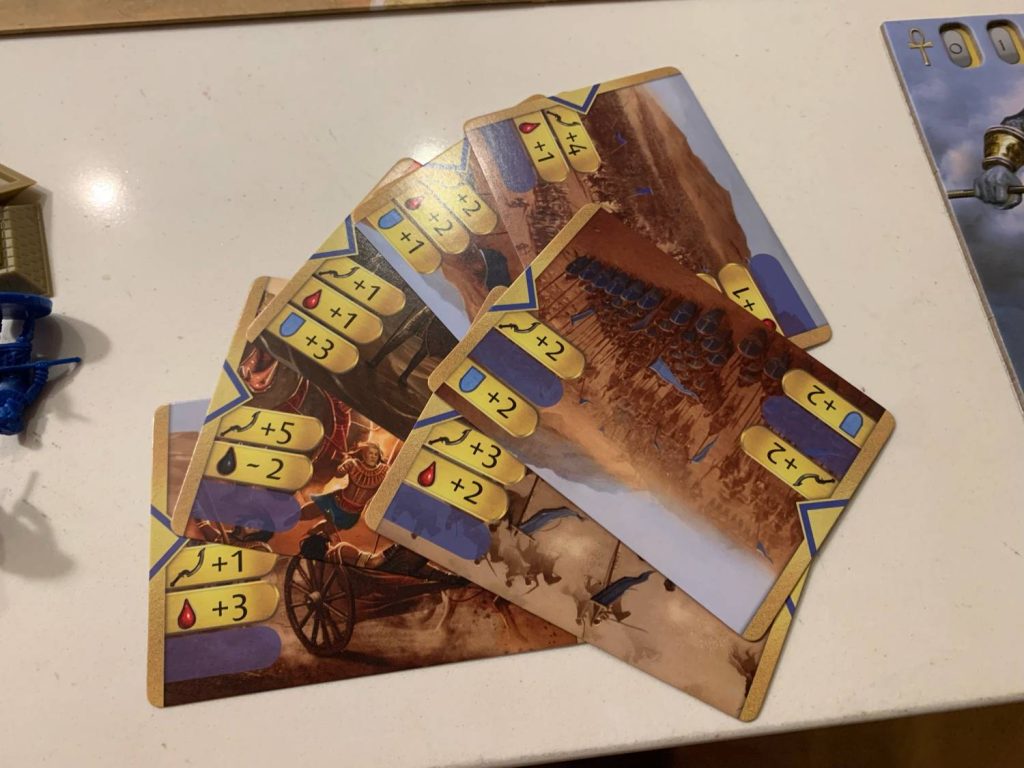
Troops don’t automatically get removed from the board in Kemet combat. It may just be that they retreat. One of the strategic nuances in Kemet, as both aggressor and defender, is figuring out your goal. Do you want to prioritize winning the fight and taking/holding the territory, or are you more interested in keeping your troops around to fight for the same scrap of land again? Are you trying to win or are you trying to thin out the opponent’s ranks, regardless of outcome? Do you want to have the space when the dust settles, or do you just want the other player not to? Different cards serve different goals.
The other place where Kemet made its name is the power tile market, a massive, initially entirely overwhelming but eventually only slightly overwhelming collection of tiles in different color sets. These tiles have a wide variety of powers. Some raise your attack or defense. Some increase the power of the different basic actions, netting you more Prayer Points when you pray, or allowing you to move further.

The most attention-grabbing powerups are the various creatures, which add a mythical beast—or, you know, an elephant—to your army. These are represented on the map by big, chunky minifigures. From a sculpting point of view, the scorpion is the best one. We can all agree. That’s why it’s on the box art. They knew.

The number of tile sets available changes with the number of players, and each color encourages different play styles. They’re part of an economy involving Prayer Points—used to recruit more troops, construct pyramids, and buy power up tiles—and pyramids, which players can build up over the course of the game. The more levels on your pyramid in any given color, the more powerful the tiles you can purchase.
Kemet: Blood & Sand has tons of strategy, power tile combos, bluffing, and a wonderful combat mechanic that keeps both attacker and defender on their toes. When I say it’s dumb, I don’t mean it’s stupid. It’s dumb like a Mission: Impossible movie is dumb, which is to say it’s awesome. It’s big, it’s dumb, it’s brutal, it’s fun. What more could you want?
What More You Could Want
Being a revision, Blood & Sand is by nature an attempt to address that very question. What more could you want? Some rebalanced power tiles, a built-in fourth set of tiles that were originally part of an expansion, trays to expedite setting up the tile market, a small board to keep easy track of turn order and victory points, a change to the victory conditions imported from an expansion, and Veteran Tokens. Those are the more you could want.
All of these changes are for the best, and two are worth looking into at length.
Count ‘Em Up
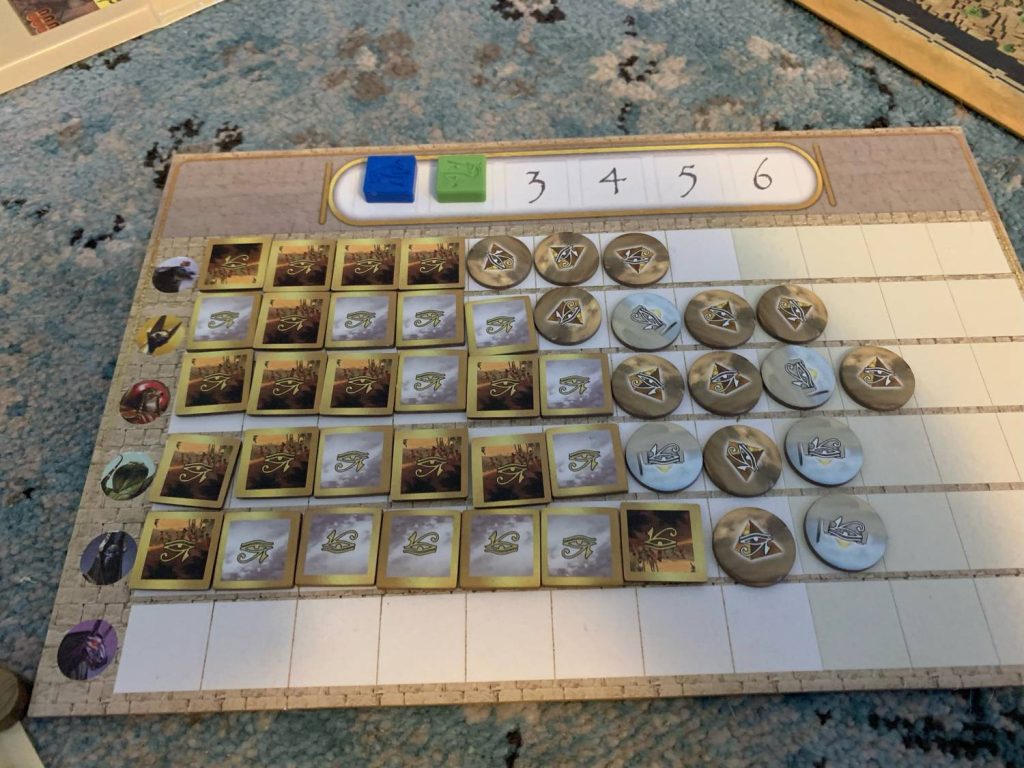
The board that tracks victory points is indispensable. With the adjusted victory condition—you win if you have 9 or more points and you have the most points at the start of your turn—the board makes the escalating tension all the more obvious.
Your lead is seldom safe, and the VP board highlights when it’s time to take someone down a peg. Points in Kemet are measured with a combination of square and circular tokens. The square tokens cannot be taken away from you. The circular tokens, on the other hand, know no loyalty. They bounce around from player to player as control over different temples and pyramids switches hands. The circular tokens can be gained quickly, helping to assert an early lead or launching an otherwise forgotten player into contention. By the same, er, token, it’s hard to hold on to more than two or three circular tokens for long. If your lead is built on circular tokens, select strikes in select locations can easily level the score.
I can understand if some players would prefer playing with foggier conditions. Some people won’t like the idea that players don’t have to pay attention to keep track of the points. Others may not like that they hit the threshold and everyone has a chance to smack them down. This does make the game a round or two longer. For my money, it’s worth it. The idea that you stake out a claim on the lead and then have to hold it is much more satisfying. Games like Root let you play a final turn that abandons long-term strategy in order to win. You can’t do that in Kemet: Blood & Sand.
Veteran Tokens
The addition of the Veteran Tokens is an excellent design adjustment. If you attack in Kemet: Blood & Sand, if you’re the aggressor, you earn a victory point for emerging triumphant, same as the original game. Now, though, if you lose the battle as the aggressor or as the defender, you gain a Veteran Token, which can be traded at the end of a round for troop deployment, Divine Intervention cards, or Prayer Points. If you win as the defender, you get two of them.
This is more immediately satisfying for our lizard brains—I managed to hold down my position, I get something for it—and it dissuades dog-piling. If everyone attacks the same player for an entire round, they will emerge far more powerful going into the next round. I enjoy just about any design adjustment that takes the sting out of aggressive targeting.
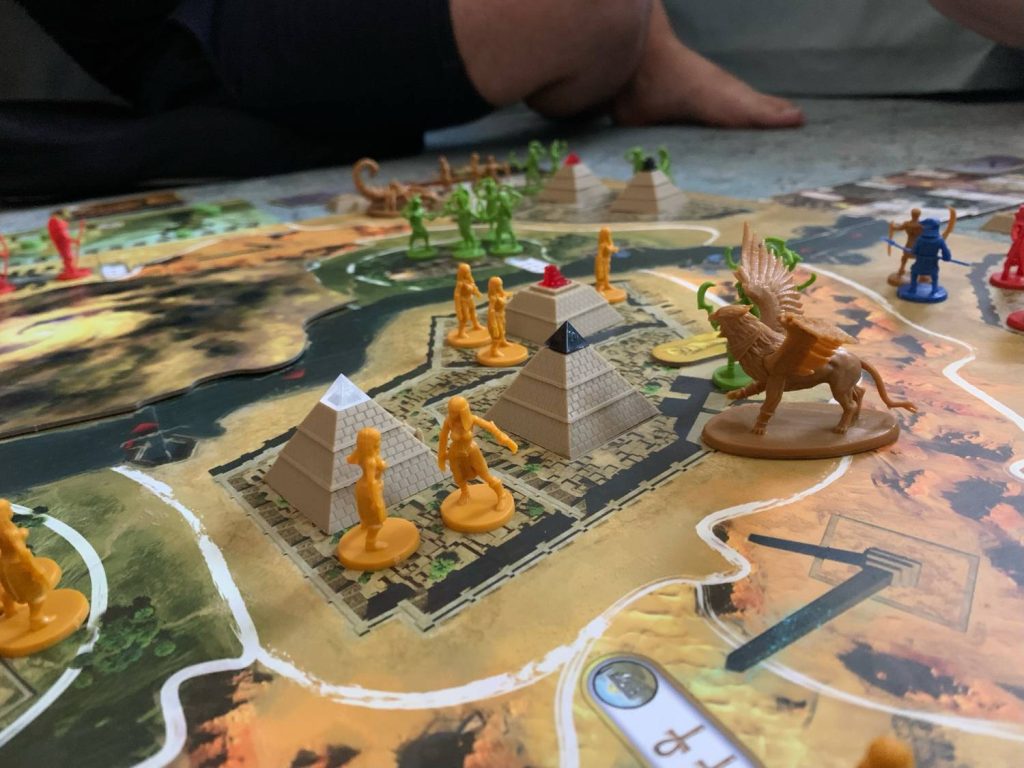
Wrap Up (Cos, like, mummies, they’re wrapped up. It’s a joke.)
If you want to play a larger board game, but you’re worried about being overwhelmed, Kemet: Blood & Sand is a pretty good entry point. This is especially true if you play with someone who can teach the game. The manual is good, but it makes Kemet seem less approachable than it is. Like most of the heavier games I love, the real weight here is not in playing, but rather in trying to play well.
A few provisos if this is your first Big Game Rodeo, born out of my experiences with my play group:
- There are too many tiles in the market for you to understand all of them in your first game. I recommend picking a single color and exploring it. If Red is in play, that’s a good place to start, since it focuses on simple Attack Smash-Smash Big Damage Boom Time. As you feel it out, don’t forget that the game is here to help. The box includes three or four handy tile catalogues that can be perused between your turns. For the love of all that is holy in this world, please do not wait until the beginning of your turn to look at those.
1a. (No, it wasn’t me.)
1b. (No, I don’t want to talk about it.)
- Kemet can take much longer than advertised at higher player counts with less-experienced players. With all those tiles and the various ways in which the board state can advance, analysis paralysis can be a serious problem. I’d encourage playing your first few games with a Muck About and Figure It Out attitude. It will help keep things moving.
Kemet: Blood & Sand is a terrific revision and a great game. If you’re at all interested, I highly recommend it. Find three or four friends, sit down at the table, and Ke-meet on the Ke-field of Ke-battle.


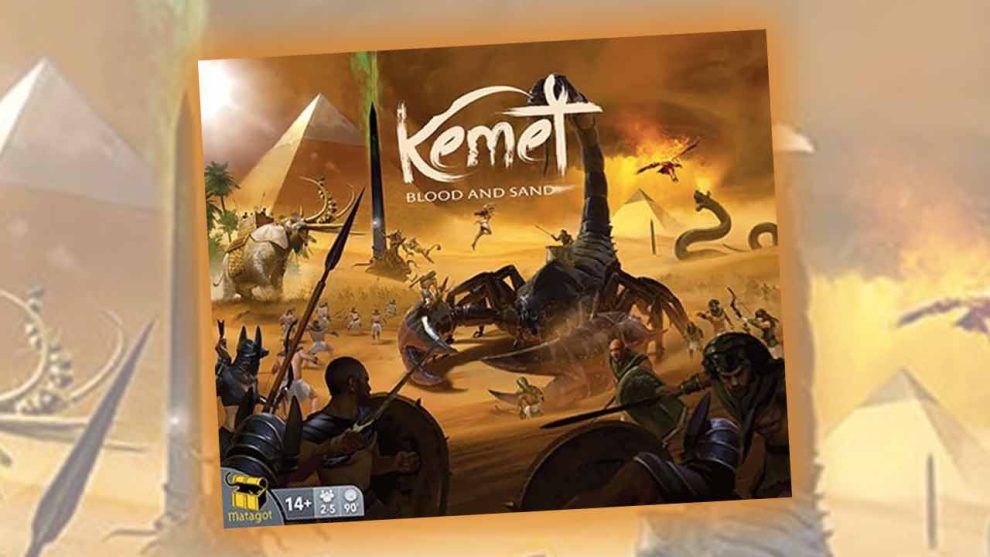


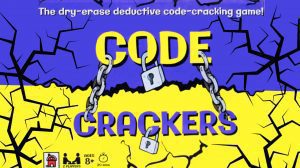






Add Comment